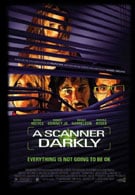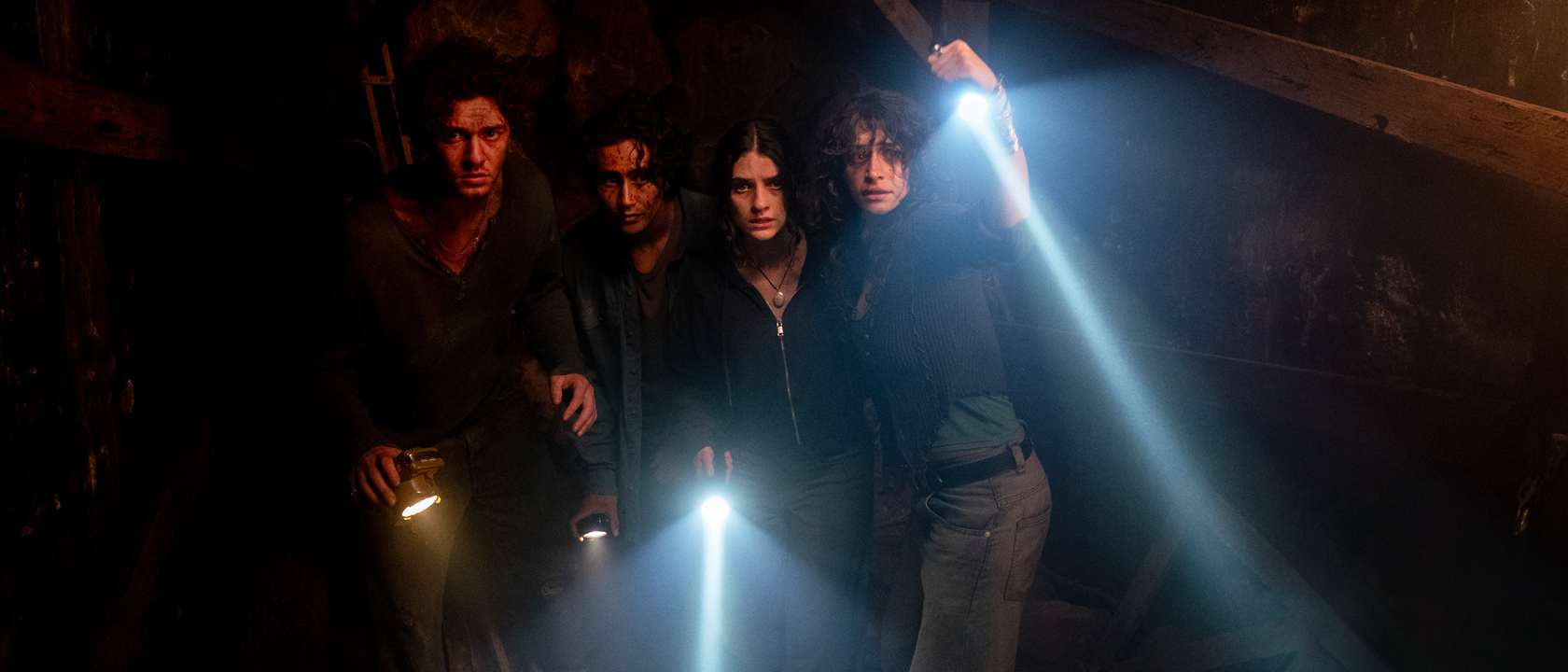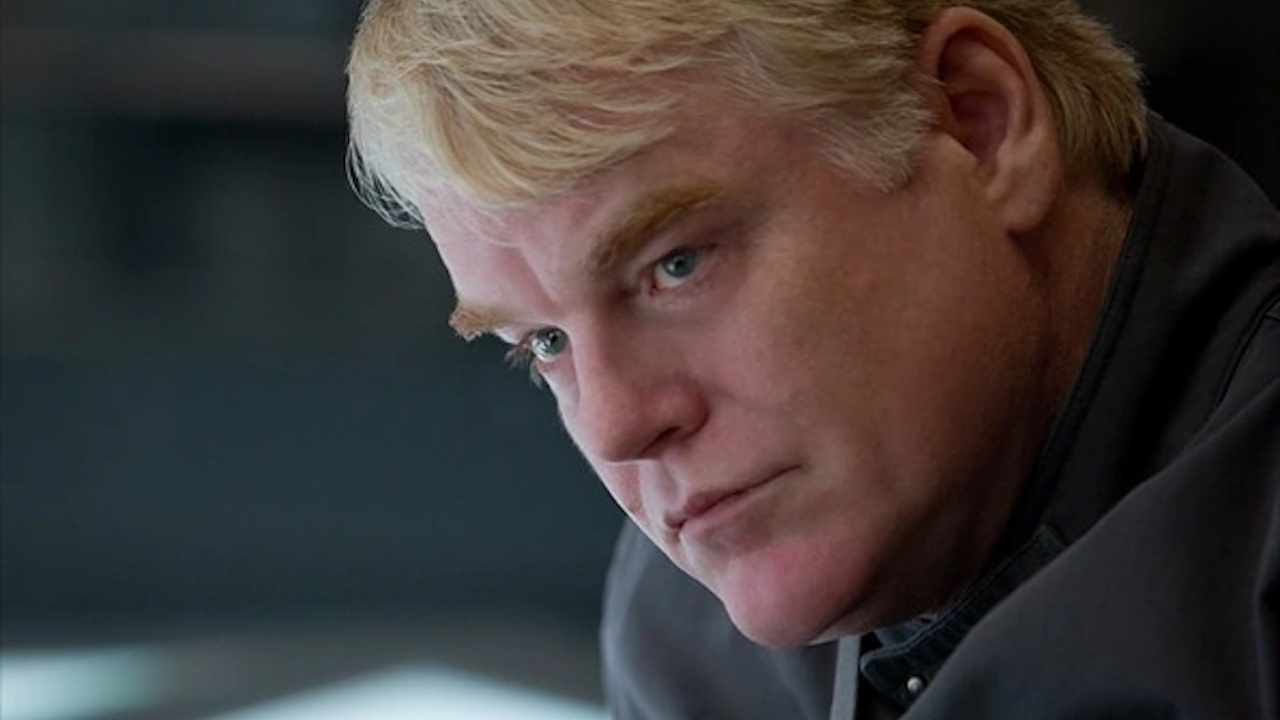Richard Linklater’s faithful film adaptation of Philip K. Dick’s A Scanner Darkly, with its mind-bending visuals and hip cast, has the makings of a sci-fi cult classic, especially among the stoner set. But in reality (a convention always in question in Dick’s novels) it’s so much more than that.
Is it: a nightmarish Orwellian vision of the not-so-distant future where privacy is a cherished relic of the past? A harrowing tale of addiction and its consequences that rises above the typical cautionary tale? A collection of deep philosophical discussions about the nature of identity and reality wrapped inside a noir-ish mystery plot? A gut-busting comedy filled with the drug-addled digressions and bumbling antics of Robert Downey Jr. and Woody Harrelson? An animation marvel that produces a living, breathing graphic novel (in some ways more successfully than Sin City) in which we experience firsthand the hallucinatory visions of the hopeless addict? If you answered “All of the above”, you’d be correct.
Linklater found the perfect source material in A Scanner Darkly, the most hauntingly personal of Dick’s tales, to continue the “rotoscoping” animation technique he’d first introduced in Waking Life. Simply put, the actors are filmed on digital video just like a normal motion picture. Then, in post-production, a team of artists “paint” over the real-life images to create an animated version of the actors and sets. The end result is consistently amazing and allows for limitless possibilities, perfectly suited for the demands of this trippy tale.
In an L.A. only seven years from now, Bob Arctor (a quietly effective Keanu Reeves), is one of the legions of undercover cops dedicated to bringing an end to the scourge known as Substance D, the granddaddy of all illicit drugs. This stuff is so pervasive that over 20% of the population has become hooked. The only effective treatment for those who’ve fallen under its spell is provided by a shadowy treatment facility known as New Path. The need for secrecy is so vital that Arctor and his superiors know each other only by their code names and wear “scramble-suits” when they meet to protect their true identities. These cloaking devices disguise the voice and create a constantly shifting array of faces and body types to prevent detection (a nifty effect with this animation style). Here’s the kicker: our hero is a full-blown junkie himself and has just been ordered to start round-the clock surveillance on a dopehead by the name of, you guessed it, Bob Arctor.
Arctor shares his grubby house with the loquacious James Barris (Downey Jr.) and his frequently confused sidekick Ernie Luckman (Harrelson). He also pines for his dealer Donna (Winona Ryder, in a welcome return to the screen). Call it stunt-casting, but the decision to populate the film with actors, with the exception of Reeves, who’ve had their own checkered pasts is a savvy one and lends an additional element of realism, and just a touch of wink-wink irony, to their performances. The ensemble shines, especially in a hilarious sequence involving a dispute over a recently purchased bicycle that perfectly captures the essence of a paranoid, drug-addled conversation. Downey Jr., in particular commands center stage every time he’s onscreen with his machine gun delivery and verbal histrionics – it’s a hoot just trying to keep up with him.
It’s refreshing to see a film not shy away from the notion that drug use, at least in its early phases, can produce some undeniably great times, although at far too great a cost. Inevitably things take a turn for the worse as Bob’s addiction starts to take its toll and the department begins to seriously question his effectiveness in the field. As he grows increasingly disoriented, so do we, unable to distinguish between what’s real and what’s imagined. Substance D, whose mysterious origins raise the question of corporate malfeasance, is insidious in its effect. As Downey Jr.’s character so eloquently states: “There’s no middle ground here. There are two types of people - those who are hooked on D and those who haven’t tried it yet.”
A Scanner Darkly represents the perfect marriage of artistic medium and subject matter. As compelling as the narrative and performances are, I’m convinced that the film would have suffered in a conventional format. For a sci-fi film, it’s almost entirely devoid of traditional action sequences – chase scenes, shootouts, and the like. The rotoscope technique transforms the screen into an open canvas, allowing Linklater to invest primarily static sequences with enough animated eye candy to keep us intrigued. It also provides access to the deepest, darkest recesses of the mind of the addict, and we’re treated early and often to these disturbing visions.
Even more troublesome than these images are the questions Dick raises. What sort of soulless, mind-numbing world have we created in which drugs may appear to be the only viable outlet for some? How far are corporations willing to go to achieve that bottom line? Is victory even possible in a war on drugs (or terror, for that matter)? Good science fiction almost always holds a mirror up to present-day society and quite often, we may not like what we see. In the end, A Scanner Darkly is all those things I mentioned at the outset, but it’s also a tragedy, a poignant reminder of how easy it is to lose one’s soul.











